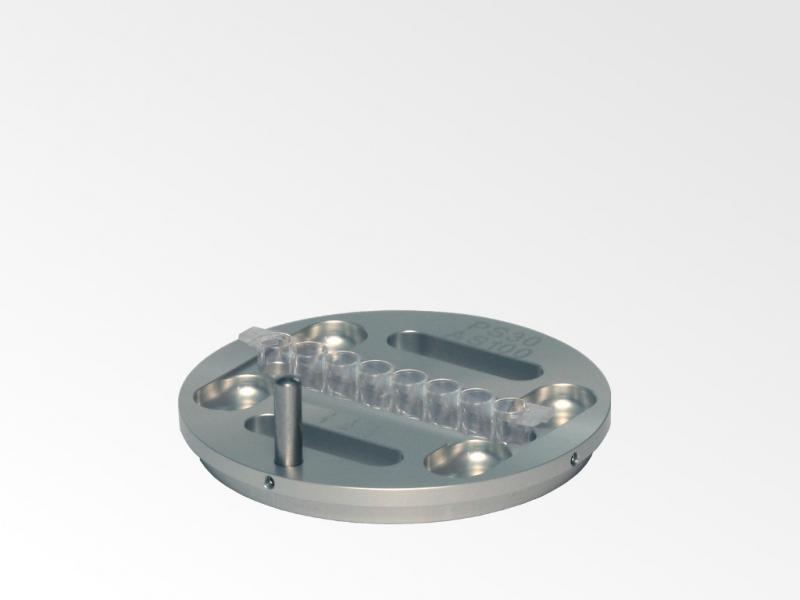Collection List: 0 Products » Show Collection List «
Do you have questions about our products or services? Just give us a call: Or send your inquiry via e-mail: Allergen SamplerAS100The new allergen sampler AS100, operated with the tried and tested MBASS30V3, allows to quickly and conveniently take an efficient sample of antigenic and allergenic proteins in the air. The most common impairment of health caused by mold is the allergenising effect of the spores and other airborne mold particles. Previously, due to a lack of suitable sampling methods, the allergen concentration was extrapolated from the concentration of spores. However, comparative samples taken with an air sampler and the allergen sampler show almost no support for this assumption. The performance features of the allergen sampler AS100:
The AS100 allergen sampling head has been developed together with BMA Labor GbR in Bochum and validated by the measurement process. Function Evaluation of an AS100 sample medium with ELISA The evaluation is performed using ELISA, a test method using antibodies and enzymatic reactions that produce a colour change. The ELISA method is described below, by way of exemplar, for evaluating samples in the AS100 allergen sampler for mould allergens from BMA Labor GbR. The evaluation is automated and has 4 sequential phases.
Phase 1: Extraction The microplate strips in which particles where deposited during sampling are filled with extraction solution. During incubation, the extracted, water-soluble proteins become attached to the inner wall of the wells of the strip. Unbound particles or proteins are then washed away.
Phase 2: Reaction with antibodies (primary antibody) Addition of antigen/allergen-specific antibodies (primary antibody) and subsequent bonding reaction with the antigen/allergen proteins. Unbound primary antibodies are then washed away.
Phase 3: Reaction with enzyme-linked antibody (secondary antibody) Addition of an enzyme-linked secondary antibody and subsequent bonding reaction with the primary antibodies. Unbound secondary antibodies are then washed away.
Phase 4: Chromogen conversion and measurement Addition of a chromogen and enzymatic conversion to give a coloured end-product. Since the colour intensity correlates to the concentration of antigens/allergens present, it is possible to carry out a computer-aided calculation of the antigen/allergen concentration based on the corresponding standard using the subsequent photometric measurement. Evaluation of an AS100 sample medium with ELISA The evaluation is performed using ELISA, a test method using antibodies and enzymatic reactions that produce a colour change. The ELISA method is described below, by way of exemplar, for evaluating samples in the AS100 allergen sampler for mould allergens from BMA Labor GbR. The evaluation is automated and has 4 sequential phases.
Phase 1: Extraction The microplate strips in which particles where deposited during sampling are filled with extraction solution. During incubation, the extracted, water-soluble proteins become attached to the inner wall of the wells of the strip. Unbound particles or proteins are then washed away.
Phase 2: Reaction with antibodies (primary antibody) Addition of antigen/allergen-specific antibodies (primary antibody) and subsequent bonding reaction with the antigen/allergen proteins. Unbound primary antibodies are then washed away.
Phase 3: Reaction with enzyme-linked antibody (secondary antibody) Addition of an enzyme-linked secondary antibody and subsequent bonding reaction with the primary antibodies. Unbound secondary antibodies are then washed away.
Phase 4: Chromogen conversion and measurement Addition of a chromogen and enzymatic conversion to give a coloured end-product. Since the colour intensity correlates to the concentration of antigens/allergens present, it is possible to carry out a computer-aided calculation of the antigen/allergen concentration based on the corresponding standard using the subsequent photometric measurement. Downloads for this product: |
Our ProductsProduct Overview
Product Accessories
» TENAX Adapter » DNPH Adapter » Microscope Slides » Climate Sensor HC2A-S » LET40 » Transverse Adapter for Air Samplers » Aluminum Tripod 3S » DuoSta » Quick-Change Adapter |



.jpg)
.jpg)

.jpg)
